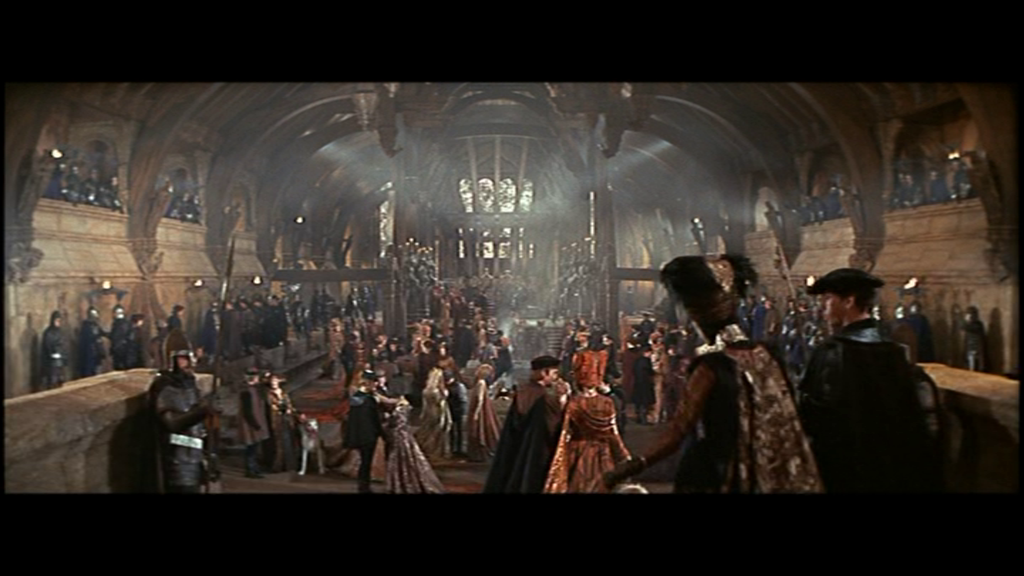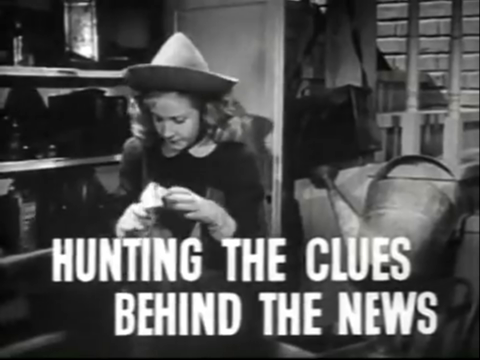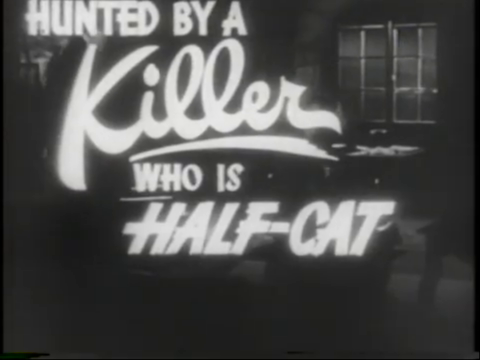
First in some kind of a series on Arthurian adaptations.
BEFORE THERE WAS SPAMALOT…
Is that how they’d advertise a re-release of the Joshua Logan CAMELOT, the first all-non-singing, all-non-dancing musical? I suppose it’d have to be.
Bunged this one into the Sony because it seemed like the right kind of holiday fare: dull, spectacular and vaguely diverting when you’re feeling dozy. And it certainly fit the bill, from overture to end credits, clocking in at around three hours which I don’t want back unless you promise I can spend them doing something else.

But it’s rather beautifully and inventively designed — it’s a big Vanessa Redgrave fashion show, a contest to see how much money the various departments can spend. Enormous, miscast and poorly staged, but splendidly mounted.
A friend once dismissed Richard Harris as an unpleasant, preening fellow, and I now suspect he must have been introduced to RH in this film (have confirmed this — he’d seen MUTINY ON THE BOUNTY but didn’t make the connection) — our regal star is curiously repellant in blue eye-shadow and the worst hairpiece of his career, simpering and mugging right at us, the fourth wall in smithereens around him. I have a suspicion he’s somehow seen Burton in the role (800-plus perfs on Broadway, plenty of opportunity) and is turning in an impersonation, but this shit plays differently if you’re a proper baritone, I guess. Burton couldn’t seem fey if he wanted to, which became its own problem in the jaw-dropping STAIRCASE.

Harris’ other role-model is surely Rex Harrison, which leads him to believe he can get by without being able to sing. He can sort-of sing, and act-sing, and all that, but can he really sell a song? Again, sort of. Vanessa Redgrave can just about sing, and Franco Nero is dubbed by a singer, so he’s OK except that he has an Italian accent only when he’s talking, which is peculiar.
The design is fab — costumes and production design by John Truscott, but with Edward Carrere as art director doing some kind of uncredited assist on the massive sets. Sometimes things are disconcertingly sixties, but this isn’t any kind of historical realism. There is no mud whatsoever. Everyone rides about in suits of armour even when they’re not going into battle.
Richard H. Kline photographs it — as he did THE BOSTON STRANGLER, THE ANDROMEDA STRAIN, THE TERMINAL MAN. A good man to have on your team. It’s 1967 so he does rather pour on the soft-focus, but only in flashbacks, and the zoom lens is slightly too active. And his director is no help, I fear. But he’s got lots of great stuff to photograph, and it’s EVERYWHERE, so he can hardly go wrong. Dig those snowy forest sets!


Apart from the direction, the editing seems like the weak spot, and not just because of the interminable length (long film’s aren’t badly edited, they’re just LONG). Poor continuity on facial expressions between wides and close shots, which you can’t really get away with — what else are we supposed to be looking at? That fireplace? Well, possibly, it’s very nice. I don’t rate continuity as supremely important — pre-codes tend to be very dodgy in this dept, and I love those — but it’s an issue here, and lets down the splendiferous effect the other departments are striving to achieve. Harris crosses a room, monologuing insufferably, without moving his lips. There’s one nice bit, where Redgrave is intercut on a swing, a see-saw, and bouncing on a blanket, which is proper sixties cinema.
Cutter Folmar Blangsted did RIO BRAVO, and a lot of other films for a lot of other big directors — too many, in fact. One notices that none of them asked him back, and one has to wonder why not? Why do the titles play over a misty forest, then fade to black, then fade up again on the same scene?


Alan Jay Lerner’s misogyny problem is ongoing, so Guinevere is a horrible character who not only cuckolds Arthur (who can blame her?) but provokes a bunch of jousts to get Lancelot hurt, before she even knows him. Merlyn (sp) is Laurence Naismith, which is fine indeed, but is given the biggest delayed entrance in screen history — except they bugger this up by throwing him into the first scene, with his ball-bearing eyes and shoulder-owl. Madness.
David Hemmings turns up after the intermission to liven things up — so we get a preen-off between him and Harris, which is entertaining, and if you don’t find it so, you can pass the time counting the highlights in DH’s hair. Mordred is from Scotland in this version, but we’re not worrying about accents. If we started doing that, Lancelot would be screwed. But he gets some natty outfits, leather trousers and jerkin, and a sort of highland rogue cossie in which the taran is replaced by streaks of charcoal. If you get bored counting the little squeaks his trousers make, you can count the different highlights in his dark ages hair.


The stunts are good — I usually find jousting tedious until the participants are unhorsed and can get the maces out, and even then, they’re scarcely nimble. But here we have the Canutt brothers, Joe and Tap, devising a series of spectacular falls. Not well shot, but the best tournament outside of THE COURT JESTER and Bresson’s flashy off-camera business in LANCELOT DU LAC.
In common with a lot of Arthurian romps — EXCALIBUR, for one — no sooner has the round table been carpentered into existence than things start falling apart. The story of happiness is written in invisible ink, and probably the best way to treat the glory of Camelot is to skip it, either ending the story when it’s founded, or starting as it ends, but here we’re trying to do the whole legend, with flashbacks of a sort to Arthur’s boyhood as Wart. A principle rule is being broken: NEVER try to tell the whole story. T.H. White did, more or less, but he had the sense to spread it across three books. Incidentally, they don’t deign to credit him here.




There are some surprising moments approximating cinema — Harris rides a camera crane, like Gene Kelly or the kid in IVAN’S CHILDHOOD, either of whom seems a possible inspiration. Harris matching his costume and posture with little Arthur is arresting. So are Merlyn’s silver eyeballs, but they totally prevent any screen relationship forming between Laurence Naismith and his regal charge. Logan failing to ever put them in a set-up together is also a contributing factor.
It’s not even a good PLAY, at least for screen purposes — servants are continually introduced as a series of Basil Expositions, so we get alluring moments of Estelle Winwood and the like flashed across the screen, only for them to vanish forever leaving us with the mismatched leads.
Did Vanessa Redgrave invent ugly-crying? She does it all through one scene here, and it’s a blast of the New Realism but maybe that doesn’t belong in this MYTHOLOGICAL MUSICAL? And even if we welcome it in, it could stand some modulation. Looking at someone gurning wetly for minutes on end is rather a strain.

For all that — and more, much more — the film at least does have some idea of what the idea of Camelot means to it — peace and civilisation and that — which comes to clarity in the final scene, “for one brief shining moment,” the rather mad ending where Harris does the latest in a long line of reprises — none of Lerner & Loewe’s songs is that catchy but that one got earwormed into me like a corkscrew through sheer force of repetition — and Arthur gets his inspiration back and the film abruptly STOPS. One would usually expect a battle or something, but I suppose that wouldn’t work here, after a song about peace and civilisation.
“Too much beauty is disgusting,” said Bresson, brilliantly, a filmmaker who also tackled this story, or a chunk of it. I didn’t get that surfeit-of-pudding nausea, though, maybe because the gorgeous design was the only thing to hang onto.

CAMELOT stars Dumbledore; Isadora Duncan; Django; Dildano; Prof. Joseph Cavor; Argos; Hold Me Touch Me; and Miles Gloriosus (uncredited).






































